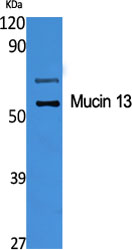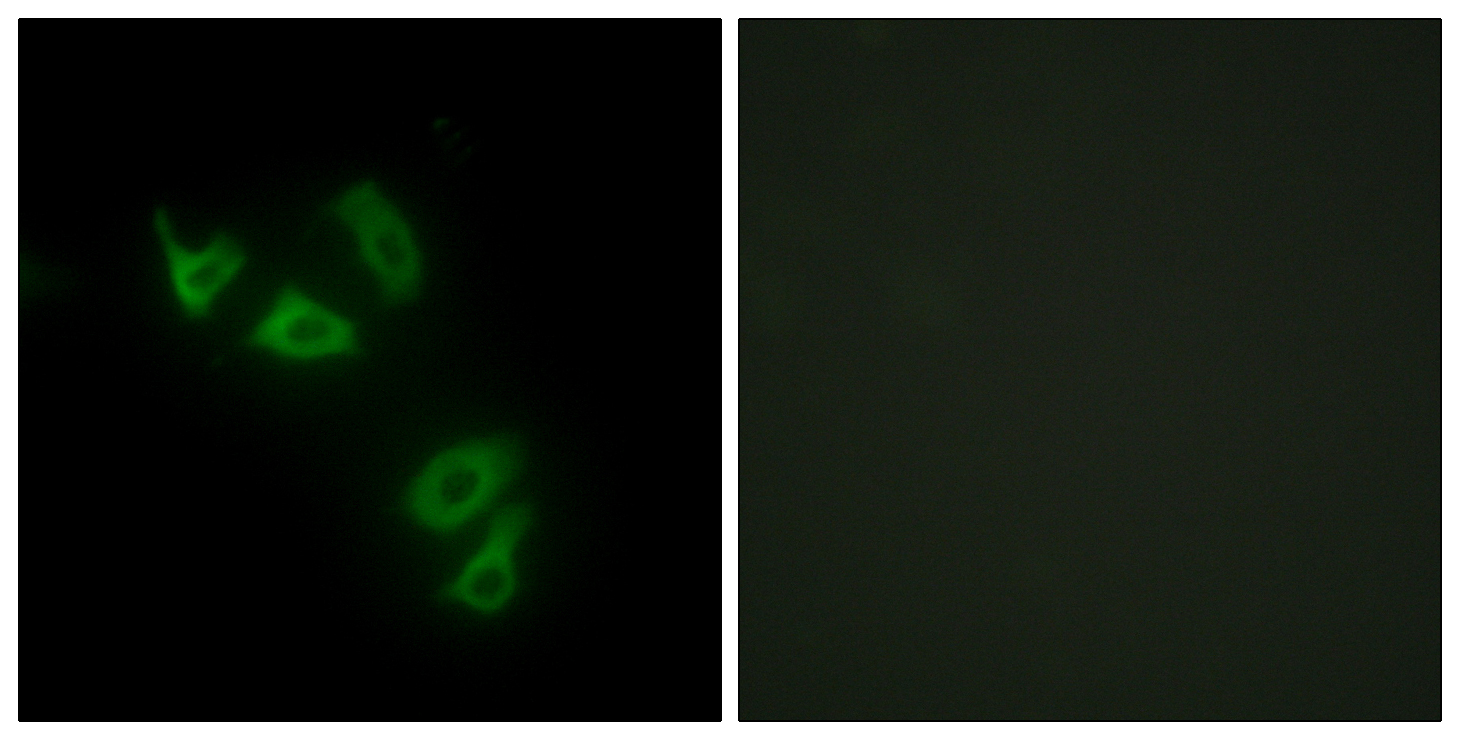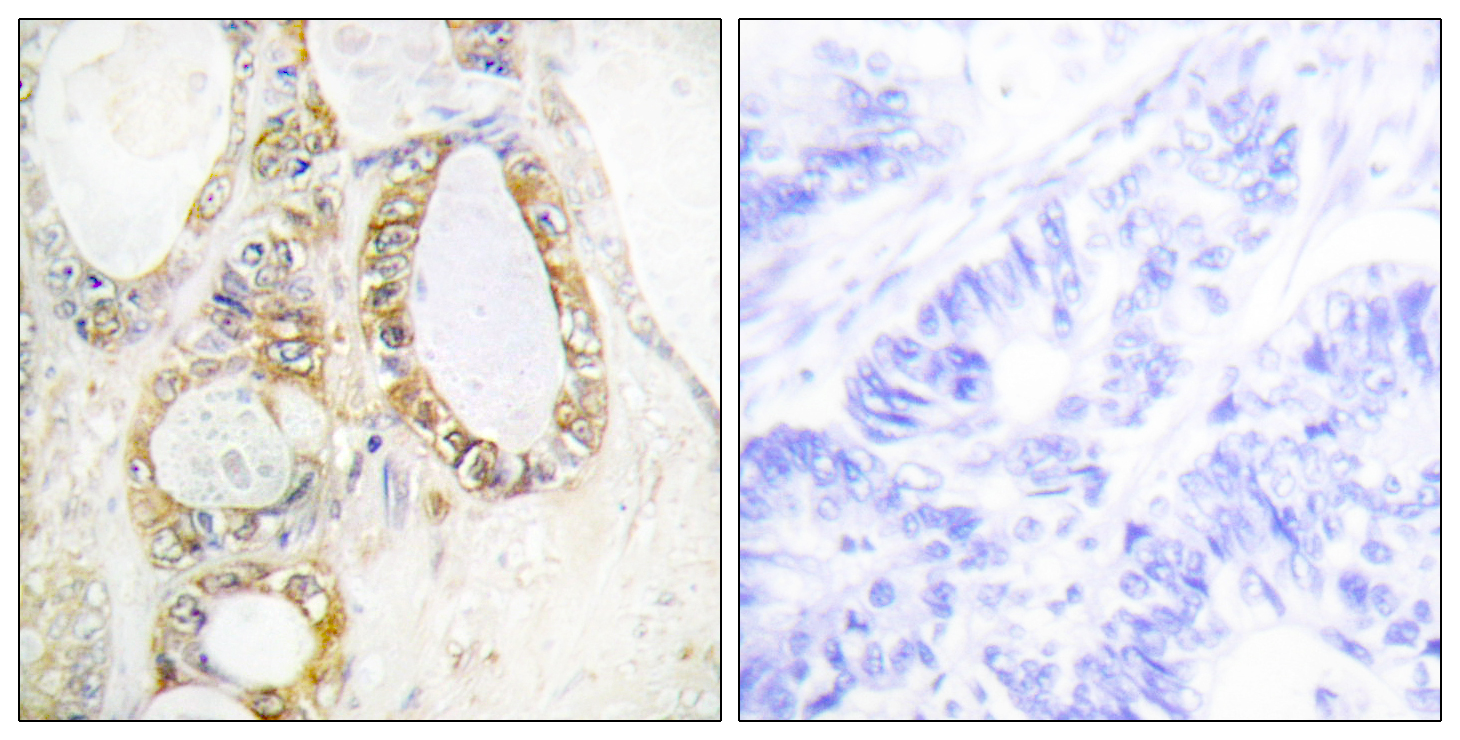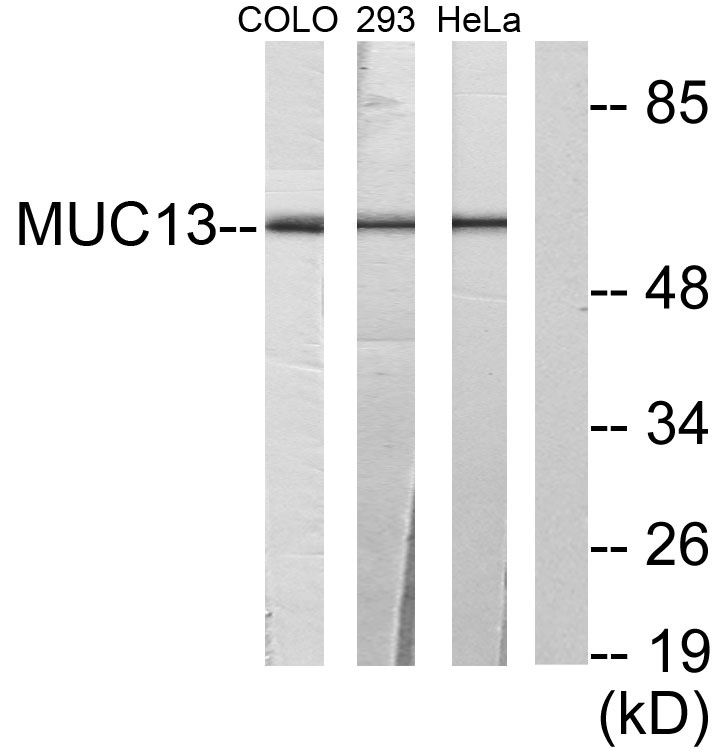Mucin 13 Polyclonal Antibody
- Catalog No.:YT2921
- Applications:WB;IHC;IF;ELISA
- Reactivity:Human;Rat;Mouse;
- Target:
- Mucin 13
- Gene Name:
- MUC13
- Protein Name:
- Mucin-13
- Human Gene Id:
- 56667
- Human Swiss Prot No:
- Q9H3R2
- Mouse Swiss Prot No:
- P19467
- Immunogen:
- The antiserum was produced against synthesized peptide derived from human MUC13. AA range:421-470
- Specificity:
- Mucin 13 Polyclonal Antibody detects endogenous levels of Mucin 13 protein.
- Formulation:
- Liquid in PBS containing 50% glycerol, 0.5% BSA and 0.02% sodium azide.
- Source:
- Polyclonal, Rabbit,IgG
- Dilution:
- WB 1:500 - 1:2000. IHC 1:100 - 1:300. IF 1:200 - 1:1000. ELISA: 1:20000. Not yet tested in other applications.
- Purification:
- The antibody was affinity-purified from rabbit antiserum by affinity-chromatography using epitope-specific immunogen.
- Concentration:
- 1 mg/ml
- Storage Stability:
- -15°C to -25°C/1 year(Do not lower than -25°C)
- Other Name:
- MUC13;DRCC1;RECC;Mucin-13;MUC-13;Down-regulated in colon cancer 1
- Observed Band(KD):
- 50kD
- Background:
- Epithelial mucins, such as MUC13, are a family of secreted and cell surface glycoproteins expressed by ductal and glandular epithelial tissues (Williams et al., 2001 [PubMed 11278439]).[supplied by OMIM, Jul 2008],
- Function:
- function:Epithelial and hemopoietic transmembrane mucin that may play a role in cell signaling.,PTM:Cleaved into two subunits, alpha and beta, probably between the first EGF domain and the SEA domain. Beta subunit contains the cytoplasmic tail and alpha subunit the extracellular tail. The homo-oligomerization into dimers is dependent on intrachain disulfide bonds.,PTM:Highly N-glycosylated.,similarity:Contains 1 SEA domain.,similarity:Contains 3 EGF-like domains.,subcellular location:Also exists as a soluble form.,subunit:Homodimer of beta subunits.,tissue specificity:Highly expressed in epithelial tissues, particularly those of the gastrointestinal and respiratory tracts, such as large intestine and trachea, followed by kidney, small intestine, appendix and stomach.,
- Subcellular Location:
- Cell membrane ; Single-pass type I membrane protein . Apical cell membrane . Secreted . Also exists as a soluble form.
- Expression:
- Highly expressed in epithelial tissues, particularly those of the gastrointestinal and respiratory tracts, such as large intestine and trachea, followed by kidney, small intestine, appendix and stomach.
- June 19-2018
- WESTERN IMMUNOBLOTTING PROTOCOL
- June 19-2018
- IMMUNOHISTOCHEMISTRY-PARAFFIN PROTOCOL
- June 19-2018
- IMMUNOFLUORESCENCE PROTOCOL
- September 08-2020
- FLOW-CYTOMEYRT-PROTOCOL
- May 20-2022
- Cell-Based ELISA│解您多样本WB检测之困扰
- July 13-2018
- CELL-BASED-ELISA-PROTOCOL-FOR-ACETYL-PROTEIN
- July 13-2018
- CELL-BASED-ELISA-PROTOCOL-FOR-PHOSPHO-PROTEIN
- July 13-2018
- Antibody-FAQs
- Products Images

- Western Blot analysis of various cells using Mucin 13 Polyclonal Antibody diluted at 1:1000
.jpg)
- Western Blot analysis of COLO205 cells using Mucin 13 Polyclonal Antibody diluted at 1:1000

- Immunofluorescence analysis of HepG2 cells, using MUC13 Antibody. The picture on the right is blocked with the synthesized peptide.

- Immunohistochemistry analysis of paraffin-embedded human colon carcinoma tissue, using MUC13 Antibody. The picture on the right is blocked with the synthesized peptide.

- Western blot analysis of lysates from 293, HeLa, and COLO205 cells, using MUC13 Antibody. The lane on the right is blocked with the synthesized peptide.



